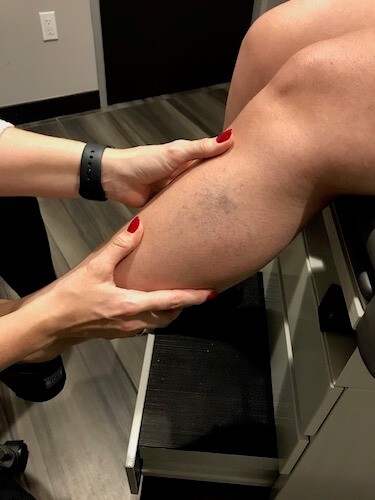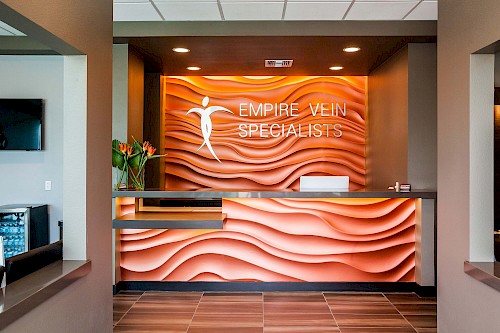The wide variety of factors that contribute to an increased risk of getting varicose veins and spider veins include genetics, health, and behavior. While you cannot prevent varicose veins there are things you can do to minimize your risk of acquiring the disease.

To better understand the factors, it might help to understand the disease. Varicose veins and spider veins are blood vessels in which the basic functioning has failed. The vessels carry blood, deficient in oxygen and nutrients, back toward the heart for replenishment. Fleshy, one-way valves keep the blood flowing in the right direction. When these valves fail, pressure in the area can increase and blood can collect. In response, varicose veins generally twist and bulge, while the smaller spider veins burst and discolor.
Most of these conditions occur in veins near the skin surface, where the vessels receive the least amount of muscular assistance with their operation. These areas are often unsightly and prompt patients into treatment for cosmetic reasons. Recurring pain and other health factors also prompt treatment.
So, what increases the risk factors for varicose veins and spider veins?
Age: First consider that varicose veins are the result of a loss of integrity of the venous walls. Prolonged wear on these vessels is one factor, so age can play a role.
Heredity: The occurrence of varicose veins is much higher in those who have one or both parents with a prior history, increasing probability by as much as 40-90%.
Weight: Increases in weight and body mass boost blood pressure, contribute to vein wall stress, and put additional pressure on the legs.
Activity: Muscular activity aids the flow of blood, squeezing vessels as muscles contract. Less activity puts more burden on the vein itself to facilitate the flow, increasing stress on the vein walls.
Standing: Blood flowing through the leg veins to the heart has the longest journey, usually against the force of gravity. Prolonged periods of standing increases vein stress.
Occupation: Professions that require long periods of standing result in large numbers of varicose vein patients. The most commonly treated professionals are teachers, nurses, law enforcement officers, construction workers, hospitality staff, factory workers, and hairstylists.
Gender: While women tend to seek treatment more often than men, they are also affected at a higher rate. Research also suggests that certain feminine hormones and medications tend to weaken vein walls, making them more susceptible to become varicose.

Pregnancy: In addition to the increased risk of hormonal activity causing varicose veins, pregnancy leads to increases in body weight, blood volume, and blood pressure, causing additional stress on veins in the legs.
Smoking: The effects of smoking cigarettes cause a narrowing of blood vessels, an increase in blood pressure, and an overall deterioration of vessel walls, which can lead to varicose veins and other serious health complications.
Injury: Any injury that increases pressure on the legs or abdomen can affect venous circulation and cause stress on the veins, especially the vessels near the surface of the skin without muscular support.
These are the most widely recognized factors that contribute to varicose vein disease. If you feel you are at risk, please contact one of our specialists to learn what you can do to minimize the likelihood of acquiring varicose veins.
Free vein screenings are available at Empire Vein Specialists to patients in Inland Empire, Riverside, San Bernardino, Moreno Valley, and surrounding areas of California for those experiencing leg pain or concerned about varicose veins. Call 1-800-VARICOSE now to book your appointment with our board-certified medical staff.